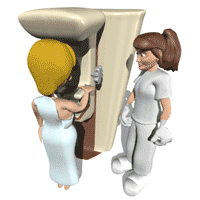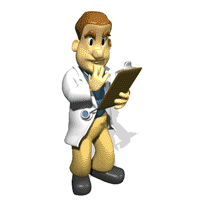


Cancer of a woman’s breast has the negative distinction of being the highest incident rate of cancer amongst women. Therefore, it is imperative that women’s breast health incorporate the following components to reduce the risk or early detection of breast cancer. Those important components include regular mammograms, breast exams by a professional and breast exams conducted by the woman herself.
Mammograms
An important part of the women’s breast health strategy that can aid in the possible early detection of breast cancer is mammograms. Mammograms are soft tissue examinations that are performed using x-ray technology. Through mammography, films are taken of the breasts and examined by radiologists for any abnormalities. If no abnormalities are found in the exam it is labeled as negative which means that there were no abnormal findings.
Women’s breast health care suggests that women, who are between the ages of 20 and 39, should receive a mammogram every three years. Those women who are 40 years of age or older should have an annual mammogram conducted.
Professional Breast Exams
In addition to having regularly scheduled mammograms, as part of the women’s breast health care plan, women should have their breasts examined by their doctor on a regular basis. The doctor will simply conduct a physical exam of the breasts with the purpose being to detect any possible abnormal growths within the glands.
Professional breast exams should be conducted by a physician once every three years. This recommended length of time is part of the women’s breast health strategy for women who are from the ages of 20 to 39. Those women who are 40 years old and over should have this type of exam conducted yearly.
Self-Examination
Probably the most important exam conducted as part of the women’s breast health program is self exams. This type of exam puts the responsibility squarely upon the woman’s shoulders and makes her accountable for the health of her breasts.
There are many techniques that can be performed as part of the self examination of the breast. As part of your learning curve, it would be appropriate to talk with your personal physician and learn about self examination. Critical information, in women’s breast health, is knowing the different feel between possible growths and the feel of normal breast tissue.
One of the easiest methods of breast examination is by simply looking at your breasts. While standing in front of a mirror, with the upper part of your body exposed, clasp both of your hands behind your head. Women’s breast health will visually looking for any changes in the shape or dimensions of the breasts. In addition, the self examining woman should check for any indentations of the skin or inverted nipples. Another indication to watch out for is any crusting or rashes of the breast and/or nipples.
One other self exam that can be conducted as part of a women’s breast health effort is the actual feeling of the breasts. Two specific methods that can be utilized are the circular method and the grid method.
The circular method utilizes the hand that is opposite of the breast that is to be examined. The starting point for this exam is at the very top of the breast being examined. Using the first three fingers of your hand press gently and begin to move the fingers in a circular motion around your breast. This process should examine the entire top half of the breast and work towards the nipple. Using this technique all portions of the breast should be examined. The second breast should be examined in the same manner.
The technique of the grid method, as part of the women’s breast health examination, has its starting point near the breast bone. Utilizing your fingertips examine the entire area of the breast by moving the fingers from the top part of the breast downward. The exam will be completed once the entire breast has been examined using this method.
Additional Instructions
There are certain times of the month that breast examinations should not be conducted. Those times are two to three days following your menstruation cycle. Other areas of examination, as part of the women’s breast health care, should include the upper portion of your breast near the armpit. In addition, it is important to feel the armpit area as well to detect any swelling of the lymph nodes.
One additional area to check for lymph node swelling is the area situated just above the collarbone or clavicle. If you detect any abnormalities or areas of concern it is important that you see your attending physician immediately.

| © RIYAN Productions |